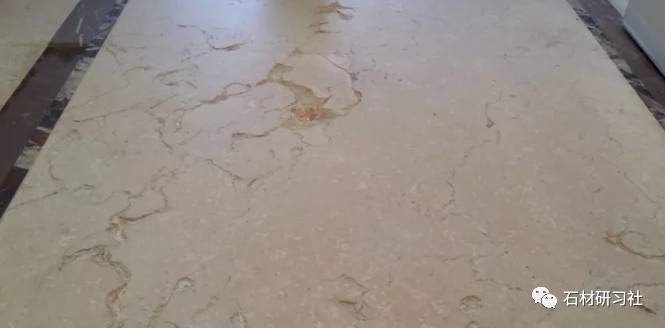1. Depth cutting: 1.5-2CM, pay attention to the thickness of the heating pipe and stone, and the thickness of the adhesive layer to adjust the depth of the cutting machine.
2. Vacuum cleaning: Thoroughly vacuum and clean the floating dust and gravel on the surface twice.
3. Detect moisture: get the peak value of moisture and determine the drying time.
4. Drying the stone: Calculate the drying time of the stone according to the peak value of the moisture, and use the physical drying method until the stone is dry (within 10% water content).
5. Cleaning potholes: It is recommended to dry brush the surface of potholes by physical methods, remove loose parts and dirt agglomerates, and finally if there are still very small cracks and gaps, you can use chemical cleaning methods to clean them up, whether it is physical methods or chemical methods. The only purpose is to ensure that the façade is clean.
6. Stone strengthening: Some people call it hardening, some call it filling, and some call it curing. As long as the scientific proof can significantly improve the looseness of the stone, this is the basic work to ensure the later repair.
7. Stone repair: Crusher, similar dry stone processing stone powder and stone particles for backup, epoxy two-component glue, crystal glue, jade glue, marble glue, determine your materials according to your own price and agreement, you can use double Component (1:4) epoxy resin glue, coloring, adding stone powder and mixing evenly, using multiple physical filling methods to ensure the full bonding and compactness of the stone repair glue and stone, and then standing for more than 48 hours to cure (See the temperature on site).
8. Coarse grinding and degumming: Remove excess glue stains (150# refurbishment sheet is optional), this is the purpose of rough grinding, the amount of water should be sufficient to ensure that the repaired glue will not shrink due to extreme heat (don’t say that the glue does not shrink, don’t believe you Try to keep grinding at one point, but the relative shrinkage rate is high or low), it is recommended to choose large teeth and thicker refurbishment abrasives (too small and fine water grinding discs, the teeth are full of stone powder during grinding, it is still Have good grinding force and drainage function), absorb water in time, otherwise water stays too long and water vapor will continue to damage the stone.
9. Dry the ground
10. Brushing protection: Saturation and uniform painting of the national first-class oil-based protective agent (first-class water-based protective agent is also acceptable), and keep in good health for 24-48 hours (check the temperature and check the relevant national standards).
11. Neutral cleaning: Quickly wash the ground with a neutral detergent (1:30), remove the surface residue of the oily protective agent (otherwise it will affect subsequent repairs), and dry the ground again (because of the protection, this time it will be dried for 20 minutes. It can be dried for 4 hours at a temperature of about 100 degrees Celsius), pay attention to water absorption must be slow.
12. Micro-crack repair: Squeegee. Of course, some manufacturers now provide various strengthening agents and fillers. You can test and use them. As long as they can repair and fill, and achieve good quality standards, it is not impossible. There is no best, only better good!
13. Fine grinding, fine grinding and polishing
14. Crystal polishing
15. Strengthen protection: If conditions permit and the contract agrees, the ground after stone crystallization treatment can be treated again with waterproof, oil-proof and anti-fouling treatment.
Post time: Mar-10-2023


